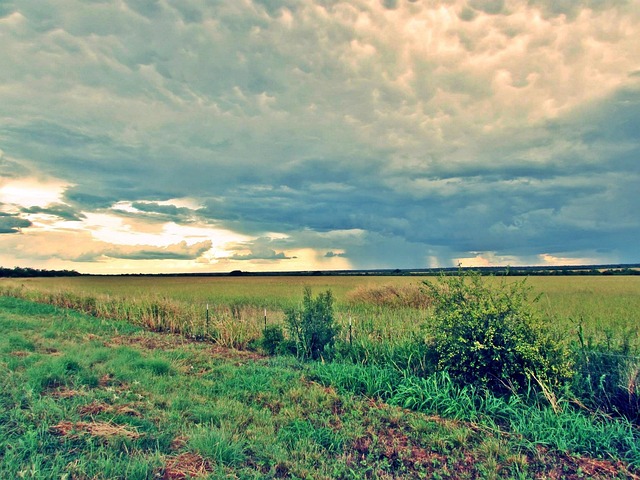Texas is a vast, diverse state with a rich cultural heritage shaped by Native American, Spanish, Anglo, and Mexican influences. It's known for its iconic lone star emblem and a mosaic of traditions that include unique culinary practices, musical genres, artistic expressions, and festivals. The Texas Hill Country offers scenic beauty alongside landmarks like the Alamo, which is significant in American history. The state's economic output would rank as the 10th largest globally if independent, with a robust economy driven by oil and natural gas, technology, especially in Austin, and agriculture. Its demographics reflect a cultural melting pot, particularly with a substantial Hispanic population. Texas boasts a variety of ecological treasures from the Guadalupe Mountains reaching 7,800 feet to its tranquil Gulf Coast beaches, diverse ecosystems like the Great Plains and Edwards Plateau, and natural landmarks such as Big Bend National Park. The state's outdoor environments make it an ideal destination for nature enthusiasts and adventurers, showcasing its ecological diversity and geological history. Texas maintains a balance between honoring its storied past and embracing innovation, exemplified by events like the Texas State Fair and its leadership in cultural identity and economic progress.
Discover the rich tapestry of Texas, a state as diverse as its landscapes. From its storied heritage and vibrant culture to its stunning natural wonders, Texas offers a unique blend of history, statistics, and scenery that sets it apart. Dive into the Lone Star State’s compelling numbers, which underscore its significance as an economic powerhouse and cultural melting pot. Join us on this journey through Texas, where each chapter reveals a new layer of this captivating American region.
- Exploring the Lone Star State: A Glimpse into Texas' Unique Heritage and Culture
- Texas by the Numbers: Striking Statistics That Reveal the Diversity of the Lone Star State
- The Natural Wonders of Texas: From Arid Deserts to Bountiful Coastlines
Exploring the Lone Star State: A Glimpse into Texas' Unique Heritage and Culture

Texas, nicknamed the Lone Star State for its single star on the flag and flagship of the Texian Republic, is a mosaic of diverse cultures and histories that blend to create a unique heritage. As one delves into the heart of Texas, one is immediately struck by the vibrant tapestry of influences ranging from Native American tribes to Spanish explorers, Anglo settlers, and Mexican immigrants. Each group has left an indelible mark on the state’s culinary traditions, music, art, and celebrations. For instance, the Texas Hill Country boasts a landscape that rivals some of the most scenic areas in the nation, with its rolling hills, diverse ecosystems, and picturesque towns that often serve as a backdrop for festivals and events steeped in cowboy culture and tradition.
The state’s cultural legacy is also evident in its iconic architecture, from the historic Alamo in San Antonio to the modern skyscrapers of Houston and Dallas. Texas has been instrumental in shaping American history; it played a pivotal role in the early settlement and expansion of the United States. The Texas Revolution, a pivotal moment in U.S. history, symbolizes the spirit of independence and self-determination that is quintessentially Texan. Today, this rich heritage is alive and well, with festivals like the Texas State Fair celebrating innovation, agricultural prowess, and a pioneering spirit that continues to drive the state’s economy and cultural identity. From its cowboy culture to its cutting-edge technology industry, Texas is a land of contrasts and a testament to the enduring legacy of its past.
Texas by the Numbers: Striking Statistics That Reveal the Diversity of the Lone Star State

Texas is a mosaic of diverse landscapes, cultures, and economic activities that collectively contribute to its rich tapestry. With an area of over 268,000 square miles, it’s the second-largest state in the U.S. by area, surpassed only by Alaska. This expansive space encompasses a variety of environments ranging from the arid deserts of West Texas to the subtropical forests of East Texas. The state boasts an impressive 367 miles of coastline along the Gulf of Mexico, offering both natural beauty and economic opportunities in fishing and tourism.
Texas’s population is a reflection of its economic and cultural diversity. It is home to the fourth-largest metropolitan area in the nation, the Dallas–Fort Worth Metroplex, yet also contains vast rural areas. The state’s economy is a powerhouse, with a Gross State Product (GSP) that would rank as the 10th largest economy in the world if it were a sovereign nation. Texas is a leading producer of oil and natural gas, a hub for technology and innovation, particularly in Austin’s “Silicon Hills,” and a major player in agriculture, with cotton, cattle, and corn being some of its top crops. The state’s demographic makeup is equally diverse, with a significant Hispanic population and an influx of new residents from across the country and around the world, making Texas a true microcosm of the United States.
The Natural Wonders of Texas: From Arid Deserts to Bountiful Coastlines

Texas boasts an array of natural wonders that defy the stereotype of its arid deserts. The state’s diverse landscapes range from the Guadalupe Mountains, which rise to nearly 8,000 feet and are part of the Rocky Mountain folds, to the palatial beaches along the Gulf of Mexico. These coastlines offer a stark contrast to the rugged terrain found further inland, with their soft sands and gentle waves providing a serene backdrop for leisurely activities and wildlife observation. The Rio Grande, which bisects the state from north to south, is not just a border between Texas and Mexico but also a vital waterway supporting a rich biodiversity. Furthermore, Texas hosts parts of the Great Plains, where fertile fields stretch to the horizon, and the Edwards Plateau, known for its rolling hills and diverse ecosystems. The Big Bend National Park stands as a testament to Texas’ varied topography, featuring canyons, rivers, and mountains, offering visitors a glimpse into the state’s geological history and natural beauty. This diversity in landscapes makes Texas an exceptional destination for nature enthusiasts and outdoor adventurers alike.
Texas, a state as vast and diverse as its storied history, offers a rich tapestry of experiences that reflect its unique heritage and culture, demographic diversity, and natural splendor. From the rugged landscapes of Big Bend National Park to the thriving urban centers like Houston and Dallas, Texas showcases an array of attractions that continue to draw visitors from around the globe. The striking statistics that underscore its economic and cultural significance further highlight why Texas stands out as a distinct entity within the United States. For those looking to explore the heart of America’s fourth most populous state, Texas presents a multitude of opportunities to engage with its heritage, contribute to its vibrant communities, and appreciate its natural wonders. Whether you’re an outdoor enthusiast or a cultural aficionado, Texas has something to offer every curious mind.



